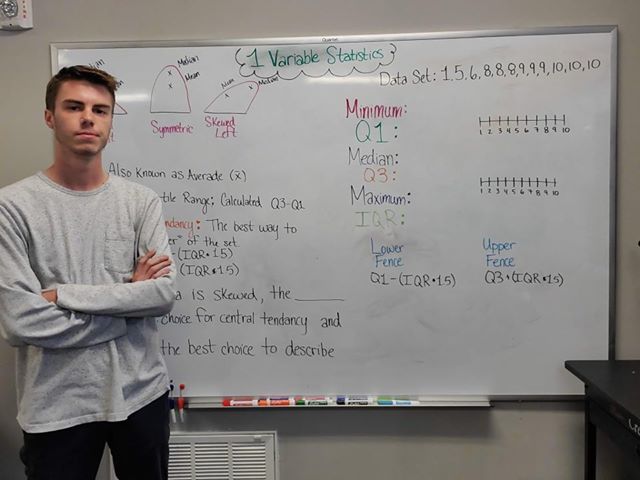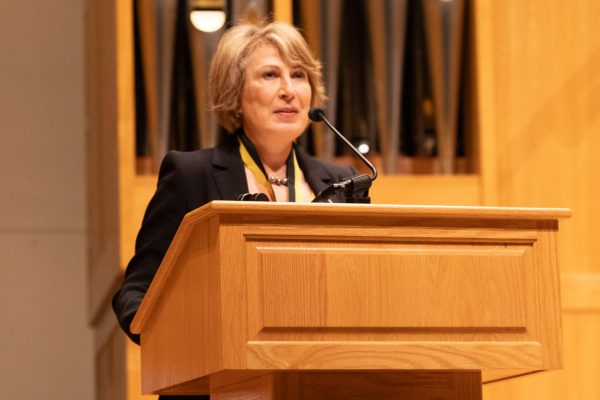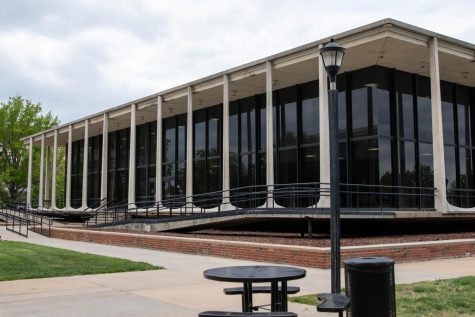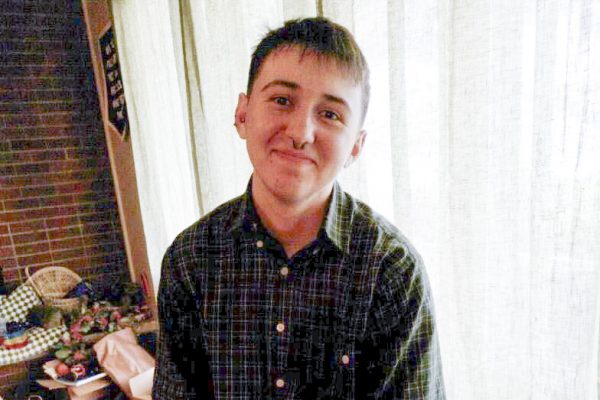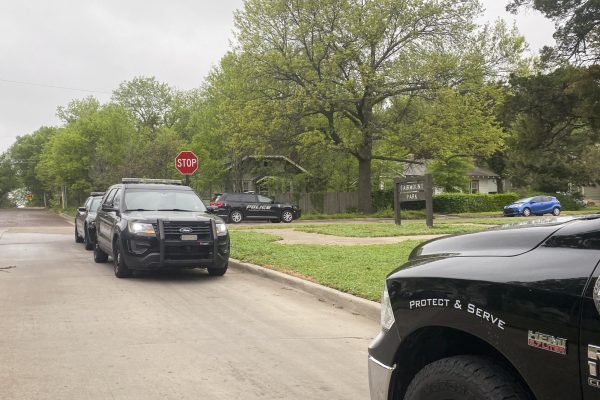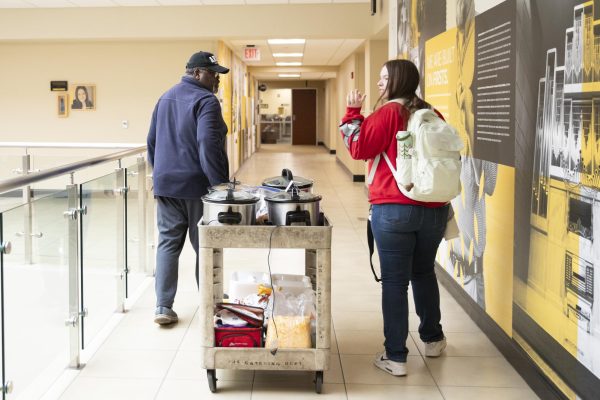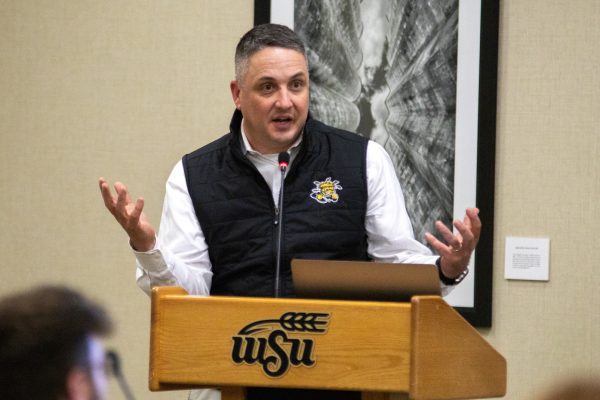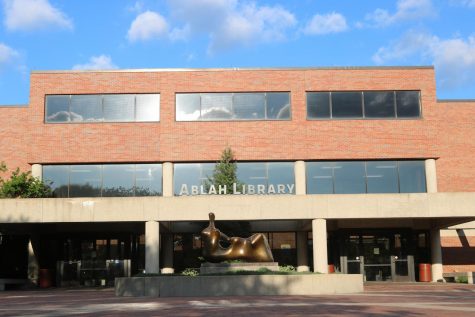Student teachers find creative ways to teach online, earn certification
Senior Jonas Zabriskie is a math student teacher. Zabriskie would film instructional videos for his students and host office hours.
All Wichita State students have faced their respective struggles brought on by the switch to remote learning, but senior education majors completing their student teaching were presented with a completely different set of challenges. Not only did they have to continue their own learning, but they also had to brainstorm unique and creative ways to teach lessons to their students.
In March, Gov. Laura Kelly canceled K-12 schools for the remainder of the semester. Students are still being provided with curriculum and have the opportunity to raise their grades from home.
Senior math education major Jonas Zabriskie said one of his biggest struggles over the last two months has been staying in communication with the students he was working with this semester.
“We do not have school district emails, which really decreases what resources we can use to be able to get into contact with our students in order to teach them,” Zabriskie wrote in an email to The Sunflower.
Student teachers have taken to video-recording their lessons and giving them to their mentor teachers to pass on to students. Zabriskie characterized this approach as ineffective but acknowledged that student teachers had “really no other options.”
Emily Reese, who is studying biological science education, said transferring class material online posed the biggest issue for her. Since her subject was only allotted 90 minutes a week, Reese also found herself running into time constraints.
To mitigate some of these challenges, both Reese and Zabriskie had to get creative.
“I’ve been offering ‘office hours’ with my mentor teacher every week that students can pop into a Microsoft Teams meeting to ask questions about how to submit or questions about the assignment itself,” Reese said.
Zabriskie had a slightly different approach.
“In the videos I create, I try to scaffold the lesson as best as I can in order to ensure that it is easy to follow along and that all potential issues can be addressed easily,” he said.
“I will also include links to online calculators, YouTube videos explaining the content, so that students have multiple versions of the content in order to ensure the students have everything they need to succeed.”
In the absense of in-person interaction with students, instructors have had to adapt quickly to make the most of online platforms.
“This situation was just another situation where we had to change our lessons,” Zabriskie said. “I think teachers are resilient and are overcoming this obstacle quite well. If anything, I believe this situation showed us teachers how important it is for us to utilize our time in the classroom when we are face-to-face and learn as a group rather than individual.”
Reese shared a similar sentiment.
“If I can make it through this, I can make it through pretty much anything,” she said.
“It has shown that being flexible and calm under pressure is a very important thing for teachers.”
Zabriskie said he expects online teaching tools to advance quickly moving forward.
“I think it will bring a surge of new online and accessible tools to students in the coming years due to the lack of them during the pandemic,” he said.
In spite of the strange circumstances, student teachers will still be able to receive their certifications and pursue teaching jobs.
“Luckily, my certification really hasn’t been affected since I got everything finished before spring break,” Reese said. “The only difference is that the timeline may be a little bit unclear on when we actually get the license.”
The process was modified slightly for those like Zabriskie, who hadn’t quite finished up before the pandemic hit.
“There is a certain requirement that needs to be met in regards to how many hours you had spent in the classroom . . . as well as how many units you taught,” he said. “Most of the student teachers were approximately 100 hours (or roughly two weeks) away from meeting this.”
WSU amended this requirement due to the switch to online learning.
The Kansas State Department of Education requires at least 12 weeks of student teaching for certification.
Assistant Dean of the College of Applied Studies Ashlie Jack told The Sunflower in an email that, “no matter when they returned to their applied learning experiences, we encouraged our WSU teacher intern candidate (student teachers) to be involved in the e-learning opportunities if their host teacher/school would allow.”
Student teachers still looking to meet requirements this spring found a variety of ways to do so. They worked with their cooperating teachers to develop remote assignments, made use of online resources from professional organizations to help gain skills they would have honed in the classroom, and enhanced their e-learning acumen to meet the needs of individual students.
“In the CAS, we took this opportunity as one to ensure our candidates were ready to lead their own classroom if and when K-12 schools would return to e-learning for any reason such as the ones presented this semester,” Jack said.
The state also requires that student teachers complete a 40-page teaching portfolio about their experiences in the classroom. This requirement has gone unchanged this semester, which Zabriskie said poses quite a challenge for students like himself.
Student teachers also have to take Praxis tests, which can only be taken at testing centers that are now closed due to the pandemic.
“Many of our student teachers have already accepted teaching jobs in the fall, but cannot technically be licensed without taking these tests,” said Zabriskie.




